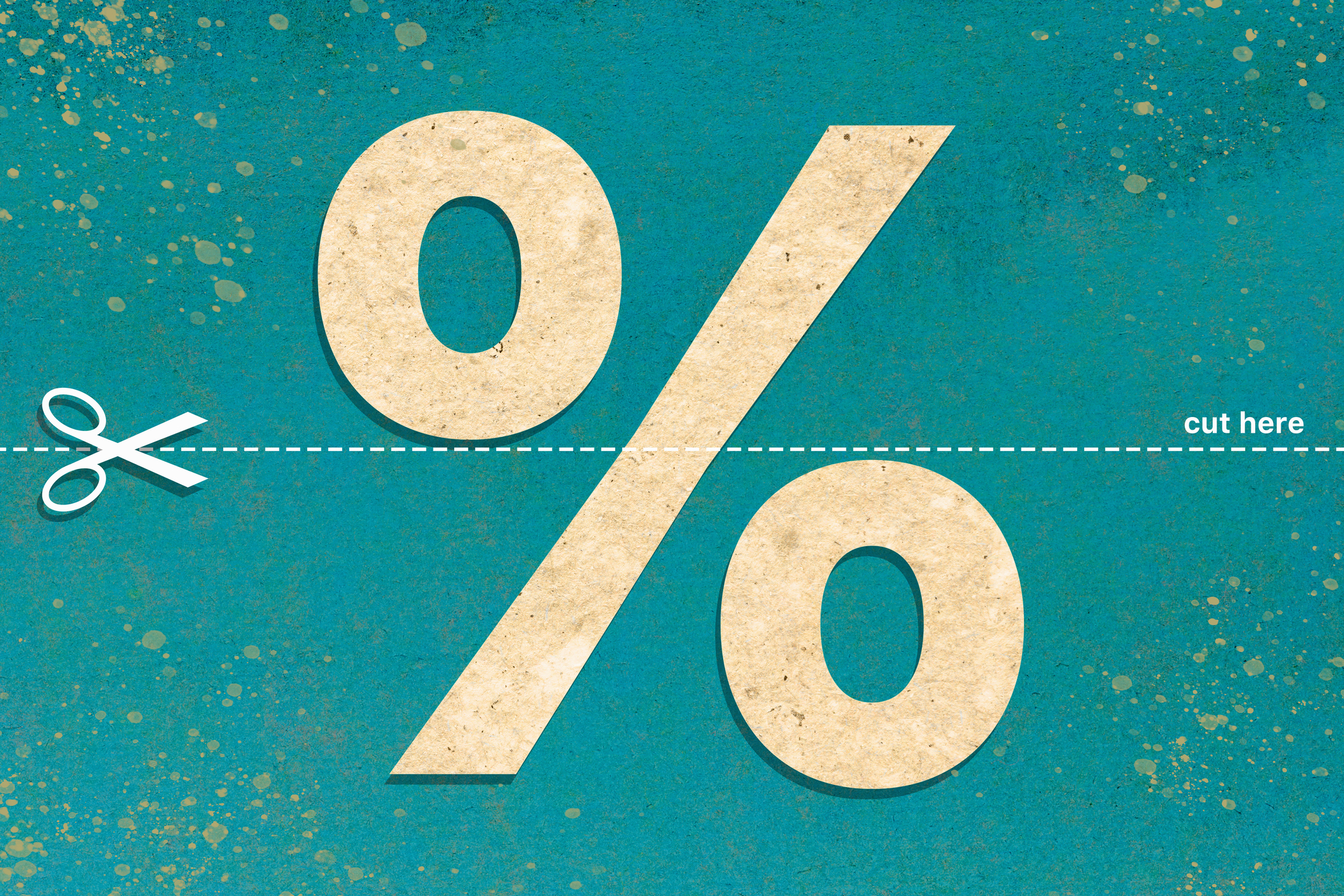The Investing Strategies I Teach Young Mothers
These simple investing strategies were developed to help single mothers, but they'll help all young people build a decent nest egg.


As part of a life-skills program for young, single mothers, I was asked to teach a class on how to get on top of your finances. I distilled my advice into a series of tips, tricks and hacks that would help all young people take control of their spending and saving. This month, I’d like to close the loop with my best strategies for novice investors.
First, some caveats. Before you even think about investing in the stock market, take stock of your overall finances. For starters, you should seed an emergency fund that will eventually cover at least three to six months’ worth of your expenses. Stash that money in a safe place, such as a bank account or money market fund, where you can get your hands on it in a hurry if necessary. The same goes for money you’re saving for short-term goals, such as next year’s vacation or a down payment on a house. You don’t want to risk money that you’re going to need in fewer than five years.
And getting rid of high-interest-rate debt should be a top priority. Paying off the balance on a credit card that charges you, say, 20% is the equivalent of earning 20% on your money.
From just $107.88 $24.99 for Kiplinger Personal Finance
Become a smarter, better informed investor. Subscribe from just $107.88 $24.99, plus get up to 4 Special Issues

Sign up for Kiplinger’s Free Newsletters
Profit and prosper with the best of expert advice on investing, taxes, retirement, personal finance and more - straight to your e-mail.
Profit and prosper with the best of expert advice - straight to your e-mail.
But for longer-term goals — notably retirement — the stock market is the place to be. And the younger you are, the more you should tilt toward stocks to take advantage of your greatest asset: time. The time-tested route to investing success is to follow these four steps: Start soon, start small, invest steadily and keep it simple.
Investing strategies part 1: Workplace retirement plans
Start with your workplace retirement plan, such as a 401(k), which gives you a triple leg up on investing. First, you can take advantage of automatic enrollment, which allows your employer to deduct money from your paycheck before you even see it and before it has a chance to burn a hole in your pocket.
Second, if your employer matches your contribution, that’s free money that you don’t have to come up with yourself.
Third, you can adjust your contribution to an amount you can afford. You should try to contribute enough to capture the full free-money match, but you can always start with less — especially if you are paying off debt or saving for a short-term goal — and increase the amount over time. Don’t be afraid to start small, even if it’s $50 or $100 per month.
Finally, once you get into the automatic-savings habit, you can invest steadily over time without even thinking about it. (Note: If you don’t have a workplace retirement plan, you can accomplish the same goals by opening an IRA.)
Investing strategies part 2: Spreading the risk
Not only does your retirement plan make it easy to set up an investment program, it also simplifies the investments themselves. The best strategy for novice investors is to spread your risk by owning shares in the entire U.S. stock market, which also gives you a shot at the market’s historical 10% annual return. You can do that by investing in an index fund, such as Vanguard Total Stock Market Index Fund (VTSMX).
In a retirement account, you will probably also have access to a target-date retirement fund, which automatically allocates your money to the appropriate mix of investments based on your age and years until retirement.
Once you have a broad market base, you can, if you wish, use a portion of your money to branch out into other investments or open an account outside your retirement plan. In any case, don’t get carried away by the latest market trend, fad or cause, whether cryptocurrency, artificial intelligence or any other investment du jour. Your ultimate goal should be to provide for your own financial security, which gives you the luxury of using your money however you choose.
Note: This item first appeared in Kiplinger Personal Finance Magazine, a monthly, trustworthy source of advice and guidance. Subscribe to help you make more money and keep more of the money you make here.
Related content
Profit and prosper with the best of Kiplinger's advice on investing, taxes, retirement, personal finance and much more. Delivered daily. Enter your email in the box and click Sign Me Up.

Janet Bodnar is editor-at-large of Kiplinger's Personal Finance, a position she assumed after retiring as editor of the magazine after eight years at the helm. She is a nationally recognized expert on the subjects of women and money, children's and family finances, and financial literacy. She is the author of two books, Money Smart Women and Raising Money Smart Kids. As editor-at-large, she writes two popular columns for Kiplinger, "Money Smart Women" and "Living in Retirement." Bodnar is a graduate of St. Bonaventure University and is a member of its Board of Trustees. She received her master's degree from Columbia University, where she was also a Knight-Bagehot Fellow in Business and Economics Journalism.
-
 I'm want to give my 3 grandkids $5K each for Christmas.
I'm want to give my 3 grandkids $5K each for Christmas.You're comfortably retired and want to give your grandkids a big Christmas check, but their parents are worried they might spend it all. We ask the pros for help.
-
 If You're Not Doing Roth Conversions, You Need to Read This
If You're Not Doing Roth Conversions, You Need to Read ThisRoth conversions and other Roth strategies can be complex, but don't dismiss these tax planning tools outright. They could really work for you and your heirs.
-
 Could Traditional Retirement Expectations Be Killing Us?
Could Traditional Retirement Expectations Be Killing Us?A retirement psychologist makes the case: A fulfilling retirement begins with a blueprint for living, rather than simply the accumulation of a large nest egg.
-
 What Investors May Face in the New Year: Interview
What Investors May Face in the New Year: InterviewKeith Lerner, the chief market strategist and chief investment officer for Truist Wealth, speaks with Kiplinger.
-
 3 Ways to Stretch the 2026 Social Security COLA For Your Budget
3 Ways to Stretch the 2026 Social Security COLA For Your BudgetThree steps retirees can take to stretch the Social Security COLA to fit their budgets.
-
 What to Make of a Hot IPO Market
What to Make of a Hot IPO MarketThis year's crop of initial public offerings could be even dicier than usual because of a skew toward tech and crypto.
-
 How to Position Your Portfolio for Lower Interest Rates
How to Position Your Portfolio for Lower Interest RatesThe Federal Reserve is far from done with its rate-cutting regime. This is how investors can prepare.
-
 A JPMorgan Fund Holds Its Own Thanks to a Focus on Quality
A JPMorgan Fund Holds Its Own Thanks to a Focus on QualityDespite its defensive characteristics, the JPMorgan U.S. Quality Factor holds up in good times and in bad.
-
 What Fed Rate Cuts Mean For Fixed-Income Investors
What Fed Rate Cuts Mean For Fixed-Income InvestorsThe Fed's rate-cutting campaign has the fixed-income market set for an encore of Q4 2024.
-
 Pickleball Injuries are Getting Out of Hand for Some Adults
Pickleball Injuries are Getting Out of Hand for Some AdultsAs more older adults take up pickleball, injuries are on the rise. Here's how you can lower your risk and still have a ball.
-
 Are You Prepared to Live Longer? MIT AgeLab Answers Questions
Are You Prepared to Live Longer? MIT AgeLab Answers QuestionsA new measure of longevity readiness indicates that for many Americans, the answer is no — and suggests what is needed to get on track.